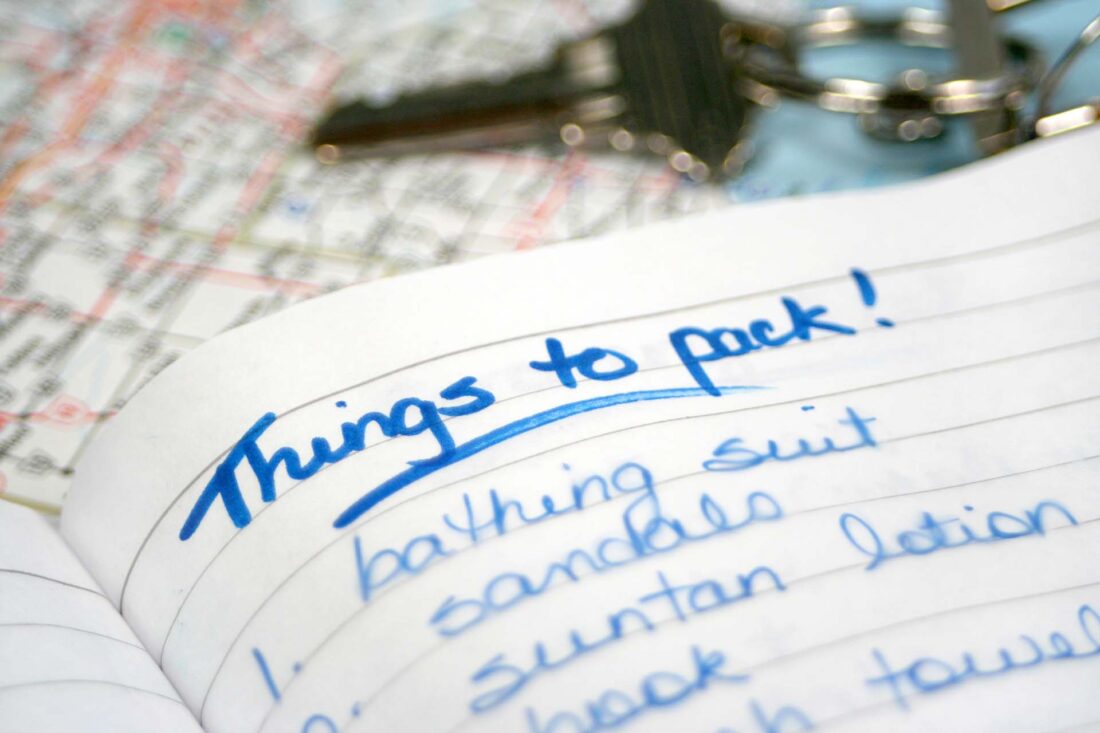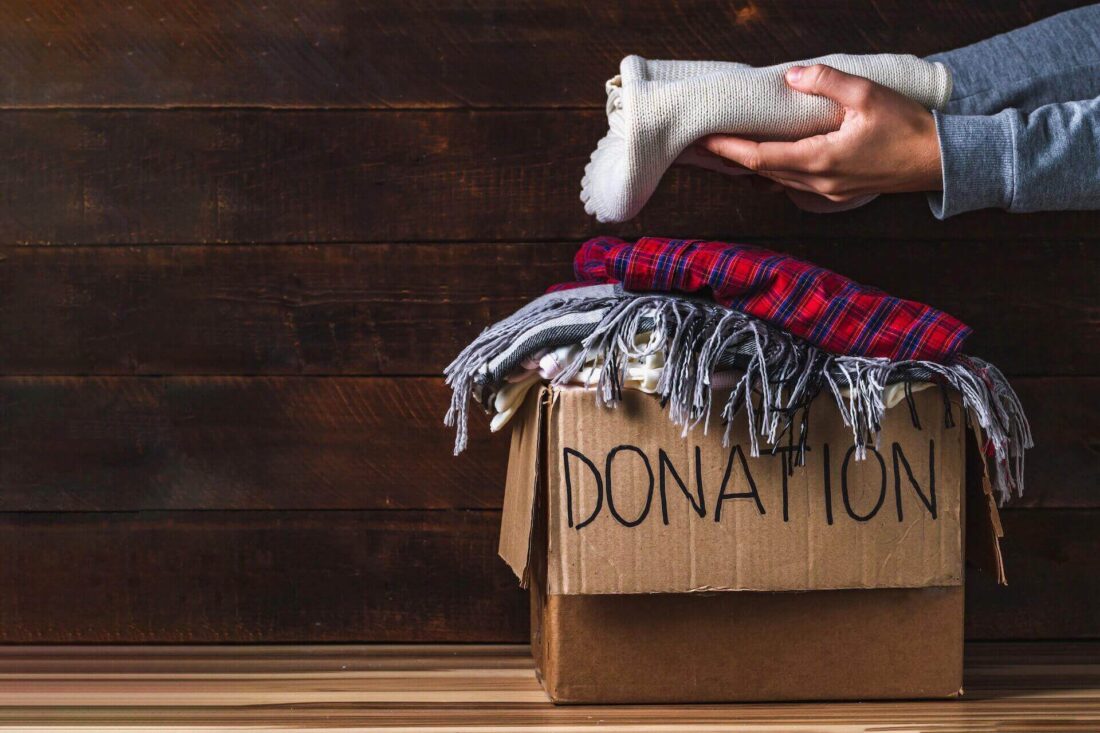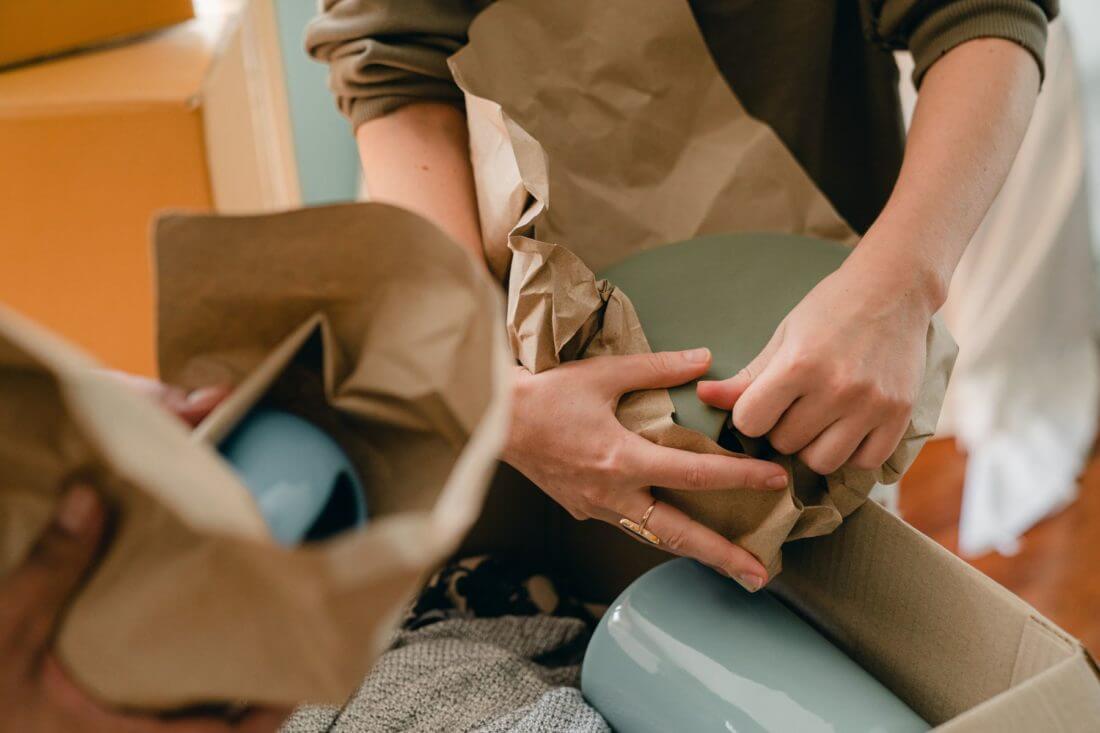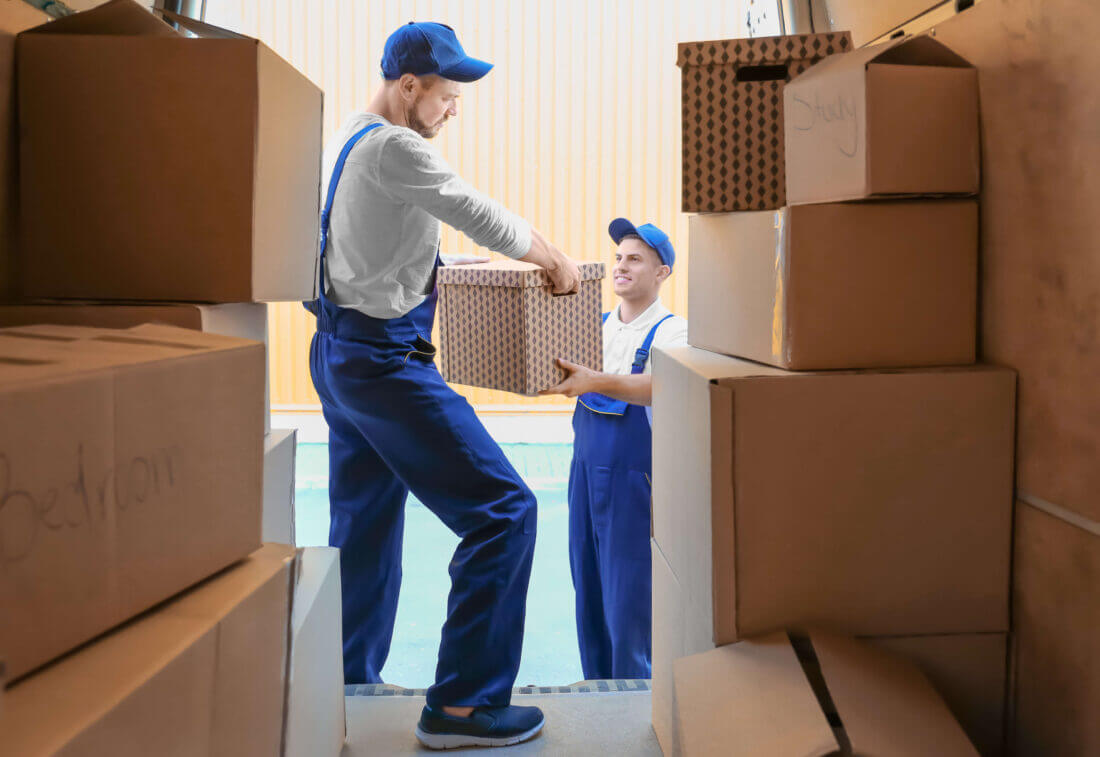If you wish to learn how to organize packing to move, dive into our step-by-step guide and simplify your relocation. From downsizing to efficiently sorting your belongings, we’ll walk you through each step of this complex journey. Discover essential tips and tricks to make your relocation seamless and well-organized.


When getting ready for the boxing process, start by assessing your relocation needs, setting a date, and hiring professional movers. Create a timeline, declutter, and gather enough packaging supplies. Pack everything room-by-room, prepare the crate with essentials for the first few weeks of relocation, and coordinate with the chosen relocation company. Organize cleaning of the new residence and start unpacking.
Step 1 – Assessing Your Relocation Needs
This assessment involves a careful examination of various factors, including the size and type of property you are moving from and to, the distance of the relocation, your relocation budget, the timeline, and any special considerations, such as relocating large objects and even delicate or fragile items.
Evaluating whether to hire professional movers or handle the relocation yourself requires consideration of your physical ability, available time, and comfort level with the tasks involved. Specific needs like relocating with your pets or children must also be accounted for when planning the relocation.
Set a Moving Timeline and Budget
The timeline outlines all the essential tasks, from the beginning of the boxing-up process to the actual relocation day and even the unpacking and settling into the new home. It should be structured to allow sufficient time for each phase, including contingencies for unexpected delays. Planning far enough in advance can help in securing desired cross-country moving services and even avoiding last-minute relocation hassles.
The budget also plays a vital role in guiding decisions throughout the relocation. It includes costs for packaging materials, packing services, professional movers or best-size truck rentals, travel expenses, storage facilities, and any additional long-distance moving services. Your budget plan should be realistic and include some flexibility for unforeseen expenses.
Hire Long-Distance Movers
If you want to know how to pack for a move fast, hiring professionals is the obvious choice. This decision requires careful research and consideration, as the movers will be responsible for shipping your belongings over a great distance. Look for companies with specific experience in long-distance moves and verify their credentials, insurance, and customer reviews to ensure credibility.
Obtain multiple quotes to find a service that fits within your budget, and be clear about what the quote includes, such as boxing-up, loading, unloading, or any additional fees. A reliable long-distance moving company will typically provide an in-home assessment to give an accurate estimate. Open communication about your specific needs, valuable items, and any special considerations will help the movers plan accordingly.


Step 2 – Create a Packing Plan
Creating a thorough plan is a pivotal phase that can significantly impact the efficiency and ease of the relocation. Firstly, make a comprehensive home inventory detailing all items to be packed and sorted by category or room. This checklist ensures that nothing is overlooked and provides a tangible way to track progress.
If you’re not sure how to organize a packing list, breaking down the whole process into manageable tasks helps to make the seemingly overwhelming task of boxing up an entire household more approachable. By starting with nonessential items and then gradually progressing through the home according to a set schedule, you can maintain control over the process without becoming overwhelmed.
Step 3 – Declutter and Organize Belongings
Sorting belongings into categories such as keep, donate, sell, and get rid of allows for a systematic examination of what you truly need and want in your new home. The items that are still valuable and loved are kept, whereas those that no longer serve a purpose can find new life through donation or sale. Unusable items can be responsibly discarded. This sorting not only lightens the load of the relocation itself but often brings a refreshing sense of simplification and renewal to your life.
Check the video below for tips and ideas on how to have an efficient downsizing process.
Host a Garage Sale or Use Online Platforms to Sell Unwanted Items
Both methods require a thoughtful approach and some effort, but they can help you save some money by turning unwanted belongings into extra cash. It not only helps in reducing the volume of things to pack and transport but also allows you to recoup some of the costs associated with relocation. A garage sale can be a fun and engaging way to interact with neighbors and community members while offering them a chance to purchase items at a reduced price.
Planning, advertising, and pricing items appropriately are key to a successful sale. Alternatively, utilizing online platforms like eBay, Craigslist, Facebook Marketplace, or specialized apps for selling second-hand goods can reach a broader audience and may be more suitable for selling specific or higher-value items.
Donate Items to Local Charities or Give Them to Friends and Family
Keep in mind that donating unwanted items to local charities turns this task into helping others while adding a positive and altruistic dimension to the relocation process. This approach not only lightens your load but also ensures that the items continue to be used and appreciated.
Local charities often welcome clothing, furniture, books, and household goods, and your contributions can support their mission and benefit those in need in your community. If you have items with sentimental value or specific things that you know friends or family would enjoy, passing them on can be a personal and meaningful gesture.


Step 4 – Gather Packing Supplies
These supplies support a successful boxing-up process while protecting your belongings during the relocation and helping to keep everything organized and secure. These are the different packing materials you should consider gathering:
- Sturdy cardboard boxes in various sizes,
- Duct tape,
- Bubble wrap,
- Clear paper,
- Stretch or plastic wrap,
- Scissors or box cutters,
- Permanent markers,
- Foam peanuts or other cushioning materials,
- Furniture pads or blankets,
- Specialty boxes (wardrobe boxes, dish packs),
- Zip bags,
- Mattress bags or covers,
- Rope or bungee cords,
- Floor protectors,
- Safety gloves.
Step 5 – Pack Room by Room
Going through your house room by room is a systematic and efficient boxing-up process. By boxing up one room at a time, you can maintain organization and focus, ensuring that each space is thoroughly packed before moving on to the next.
This method allows you to group similar items and progress in a logical and controlled manner. Box-up nonessential items first, such as decorative pieces, off-season clothing, or rarely-used appliances, allows for a measured and gradual boxing-up experience. Daily essentials are left for the final stages, ensuring that life continues smoothly right up until the moving day.
Label Each Box With Its Contents and Destination Room
Clearly label the outside of each box with a detailed description of its contents, and you can quickly identify what’s inside without having to open it. Additionally, noting the destination room on each box ensures that it ends up in the correct place in your new home, whether it’s the kitchen, bedroom, living room, or any other specific area. This makes the unloading and unpacking process more efficient, as movers, friends, or family assisting you will know exactly where each box belongs.
Protect Fragile and Valuable Items
Delicate items such as glassware, electronics, artwork, or heirlooms must be handled with the utmost care. Using proper techniques, such as wrapping individual pieces with bubble wrap or packing paper, ensures that they are cushioned and secure. Utilizing specialized containers can add an extra layer of protection.
Creating a separate inventory for valuable items and a relocation binder for safeguarding important papers is also advisable. These creative storage ideas and lists can include photographs, descriptions, and even appraisals for particularly valuable belongings, aiding you in tracking these items and providing needed information in case of loss or damage.


Step 6 – Set up an Essentials Box
The crate with moving essentials should contain everything you’ll need in your new place until your belongings reach you. It typically includes toiletries, a change of clothes, important documents like identification and moving paperwork, basic kitchen supplies for simple meals, and any other immediate necessities like medication or pet food. By clearly marking the essentials box and keeping it easily accessible on the big day, you can quickly locate and utilize these items when you arrive at your future home.


Step 7 – Coordinate With Your Long-Distance Moving Company
Clear and regular communication is needed to ensure everyone is on the same page. If you are working with professional cross-country movers, providing detailed instructions on handling delicate or heavy items is essential. The same goes for discussing any special requirements like disassembly or reassembly of furniture or relocating particularly valuable or large objects.
Confirming the moving date, time, loading and unloading locations, and any other logistical details well in advance helps to avoid delays and anxiety about moving out. If friends and family are assisting, ensuring that they are aware of your plans, expectations, and any specific tasks you’d like help with is just as crucial.
Moving Services
Treat yourself with a white glove long distance moving service that’s based on the inventory list and not weight. This means a price guarantee, transparent move costs and premium moving service.
Learn morePacking Service
Sit back and relax, we’ve got packing services covered. We use moving blankets, shrink wrap, bubble wrap and even custom wooden crating. Your stuff will be protected and carefully handled during the move.
Learn moreStorage Services
Our spacious climate-controlled units will protect your things until the drop-off. No need to worry about them because all items are labeled and secure, and each customer gets a dedicated unit mixup isn’t possible.
Learn moreStep 8 – Clean and Organize Your Current Home
As each room is emptied, taking the time for the move-out cleaning ensures that you’re leaving the space in good condition, whether for the next occupants or to meet the terms of a rental agreement. This process includes checking for forgotten items in closets, drawers, and cabinets, which can be a common oversight during a busy relocation.
By methodically going through each space, you minimize the risk of leaving something important behind. It may also be wise to leave some necessary cleaning supplies easily accessible for any final touch-ups, allowing you to address any spills or marks that may occur during the final stages of moving out.
Step 9 – Unpack and Organize in Your New Home
Approaching this phase by unboxing one room at a time can provide a sense of order and control. Utilizing relocation labels on your boxes to place items in their designated rooms facilitates efficient unpacking. It may also be beneficial to prioritize rooms according to necessity, starting with essentials like the kitchen or bedrooms.


Follow Our Guide on How to Organize Packing to Move, and You’ll Relocate ASAP
Follow our step-by-step guide on how to organize this whole process, and you’ll find relocating has never been more straightforward. From planning the boxing-up process to unpacking, Long Distance USA Movers will provide you with curated tips and the pathway to a successful relocation. Feel free to contact us should you need additional support or have specific questions for our expert movers. Let us guide you through this adventure and turn what could have been a daunting task into a smooth, successful, and stress-free transition.
FAQ
What Is the Best Way to Organize Packing for a Move?
Begin by creating a relocation checklist and timeline to help you visualize the whole process and establish what needs to be done. Sorting items by category or room and storing similar items together can streamline the process. High-quality packing materials, labeling, and considering the unpacking order all contribute to an organized and efficient relocation.
How Far in Advance Should I Start Packing for My Move?
Boxing-up should ideally be done several weeks in advance. This timeline allows you to pace yourself and avoid relocation stress. Nonessential items can be ready earlier, while daily necessities can be left until the big day. Beginning early also provides time to gather supplies, sell or donate unwanted items, and carefully wrap and safeguard fragile pieces.
What Packing Supplies Do I Need for a Successful Move?
For a successful relocation, various boxing-up supplies are needed, including boxes, bubble wrap, clean paper, duct tape, scissors, and markers for labeling. Specialized items such as wardrobe boxes for clothes, furniture pads, and specialty containers for fragile items might be required, depending on the belongings being moved.
How Do I Protect Fragile Items During the Move?
Protecting fragile items requires careful wrapping, padding, and boxing. Bubble wrap, clean paper, and specially designed crates can all be utilized to cushion delicate items. It’s essential to place everything securely in the box, ensuring there’s no movement and clearly labeling the container as “Fragile” so that movers handle them with extra care.
What Should I Include in My Essentials Box for Moving Day?
This crate should include toiletries, medication, basic cooking supplies, chargers for electronic devices, essential paperwork, a change of clothes, and some basic tools. Having these things readily accessible can make the first night in your place more comfortable.
Should I Hire Professional Packers or Do It Myself?
The decision depends on various factors, such as budget, time constraints, the complexity of the move, and personal preferences. Professional packers can provide efficiency and expertise but come at a higher cost. Doing it yourself can save money but requires more time and effort.
How Do I Label and Categorize Boxes for Easy Unpacking?
Labeling and marking each box with both its contents and the room it belongs to in the featured home. Providing a brief description of the contents can also assist in identifying the priority of unpacking.
How Can I Efficiently Declutter Before Packing?
Sorting items into categories such as keep, sell, donate, or dispose of can be a helpful approach. Hosting a garage sale, donating to charity, or utilizing online marketplaces to sell unwanted items can be effective ways to declutter.
How Do I Handle Valuable and Sentimental Items During the Move?
Valuable and sentimental items require special consideration. For sentimental objects, using specialized materials and perhaps even transporting them personally can ensure their safe arrival.
How Do I Coordinate With a Moving Company or Friends Helping With the Move?
When relocating with the help of a relocation company, obtaining quotes, understanding the services provided, and confirming dates and times is essential. If friends are helping, communicating expectations, providing necessary supplies, and perhaps offering incentives like food or small gifts can create a smooth experience.
What Are Some Tips for Loading the Moving Truck Strategically?
Strategically loading a truck involves placing heavier items on the bottom and lighter ones on top, utilizing furniture pads to prevent scratches and ensuring that items are secure to prevent shifting during transport. Using the available space efficiently helps prevent multiple trips or the need for an additional vehicle.
How Can I Stay Organized During the Unpacking Process in My New Home?
Creating a checklist or timeline for unpacking helps maintain focus and pace. Unpacking essentials and daily necessities first, followed by other items systematically by room or category, can create a smoother transition.
How Do I Handle Furniture Disassembly and Reassembly?
Handling furniture disassembly and reassembly requires proper tools, an understanding of the furniture’s construction, and careful handling. Photographing or labeling parts during disassembly can aid in reassembly later. Hiring professionals or seeking assistance from knowledgeable friends can also be beneficial if the process seems too complex.
What Should I Do if There Are Unexpected Delays on Moving Day?
Unexpected delays require flexibility and contingency planning. Keeping essential items accessible, communicating with all involved parties, and having a backup plan for accommodation or storage if needed can mitigate stress. Professionals often have policies and procedures for dealing with such delays, so understanding these in advance can be helpful.
What Steps Should I Take To Settle Into My New Home Smoothly?
Settling into your home smoothly requires a combination of practical and personal steps. Personalizing the space, meeting with your neighbors, and exploring the new community can create a sense of belonging and ease the transition.
How Do I Update My Address With Relevant Institutions After the Move?
Updating your address with relevant institutions involves notifying governmental agencies, financial institutions, insurance providers, employers, schools, medical providers, and subscription services. Many of these changes can be made online, while others might require phone calls or in-person visits.
What Are Some Tips for Coping With the Emotional Aspects of Moving?
Seeking support from friends and family, allowing time to say proper goodbyes to the old place, and embracing the opportunities in the new location can help with emotional adjustment. If the relocation is particularly stressful or significant, professional counseling or support groups could also be considered.







